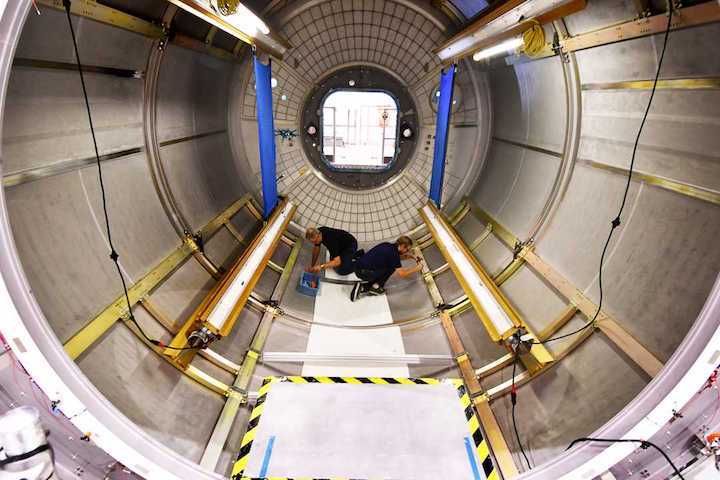18.08.2018

Picture this: You're hovering over the moon in zero gravity with three other people in an aluminum container that best could be described as a bloated school bus that's part space laboratory and part intergalactic Days Inn.
Add robotic work stations, a place to exercise and science payloads, and conditions are likely to get tight for the 2 to 3 weeks you'd be in space. Every inch counts in the lunar habitat as you eat, sleep and help with missions on the moon and into deep space.
Lockheed Martin Co.'s Space Team on Thursday offered a rare peek of its vision of a deep space lunar habitat that would be a key component of a space gateway. That gateway would serve as a floating spaceport for space vehicles leaving earth on missions to deep space.
Lockheed is one of six companies creating lunar habitat modules and hoping, ultimately, for NASA's approval, and is part of the agency's NextSTEP contract.
Lockheed's version — named Donatello — was one of three modules made years ago to transfer cargo to the International Space Station. The modules fit snugly in the space shuttle payload bay.

Early next year, NASA could select one of the six teams developing prototypes, or take the best elements from each to develop the NextSTEP habitat. NASA crews will evaluate the prototypes in early 2019.
"They will come in spring of next year to evaluate this from a 'could they live, could they work and operate' from inside our habitat module," said Tony Antonelli, director Advanced Programs, Lockheed Martin Space.
It's hard to find prototype details of the five other teams involved in the NextStep program. And Lockheed Martin engineers, who offered viewings of the Donatello shell, didn't tip their hands too much on the intricacies of their design.
In the next few days, the prototype will be closed to the public in preparation for the NASA crew evaluation next year.
Lockheed Martin team members said they've heard bits and pieces of what the competitors are doing but haven't seen anything of note yet to make a comparison. One advantage the Lockheed Martin habitat design might have for NASA is the company's role as prime contractor for NASA's Orion Multi-Purpose Crew Vehicle.
Orion is the only spacecraft designed for long-duration, human-rated deep space exploration and the spacecraft will transport humans to interplanetary destinations beyond low Earth orbit, such as the moon and eventually Mars, and return them safely back to Earth.

Earlier Thursday, Lockheed Martin executives met at the Kennedy Space Center Visitor Complex to officially announce its sponsorship of the Astronaut Training Experience, (or ATX), which now carries the moniker "Exploring with Lockheed Martin."
The event also included a special visit by 15 students from Stone Magnet Middle School in Melbourne and Southwest Middle School in Palm Bay.
Jaedon Hight, an eighth grader at Stone, gave the attraction's Micro Gravity Simulator a review that probably ranks as four stars for a 12-year-old.
"This is really cool," said Jaedon, adding, "I think it would be pretty cool to go into space."
"The thing I really love about this is the amount of energy and thought that went into making this an educational experience — this isn't just an amusement attraction," said Lisa Callahan, vice president and general manager, Commercial Civil Space for Lockheed Martin Space. "This is real learning that is taking place."
The ATX attraction opened in February and has proven to be popular with visitor center guests.
Quelle: Florida Today
